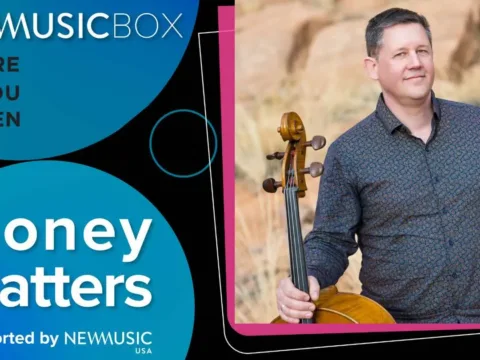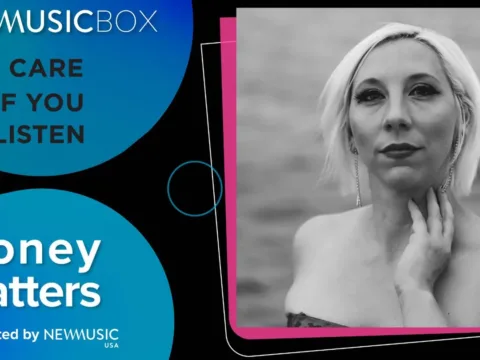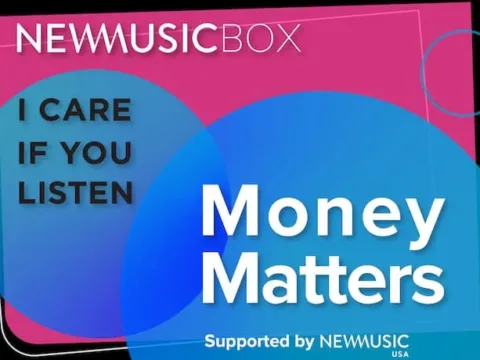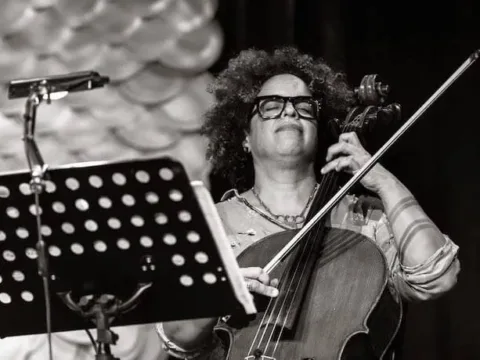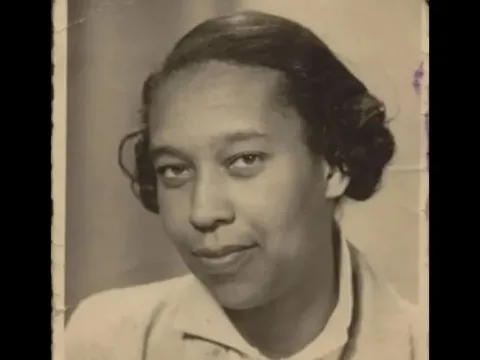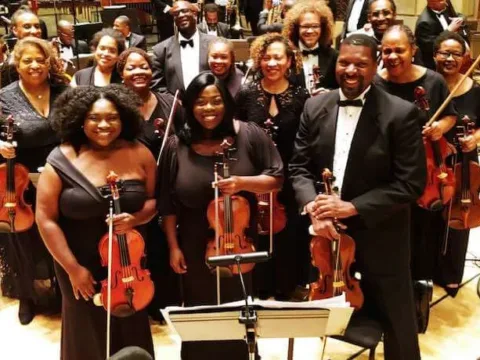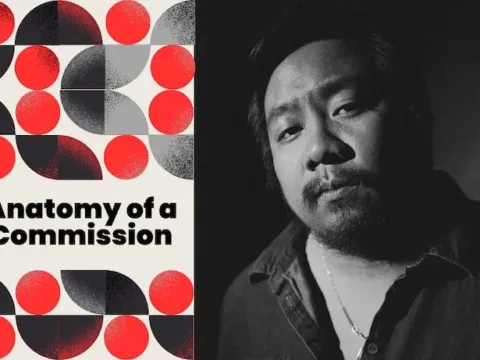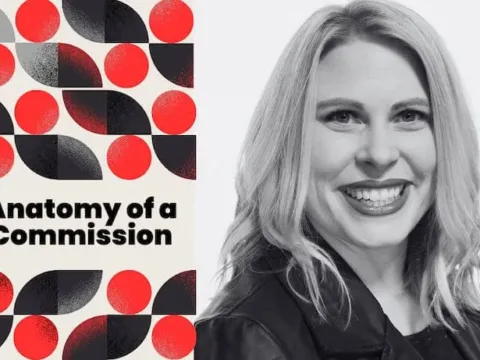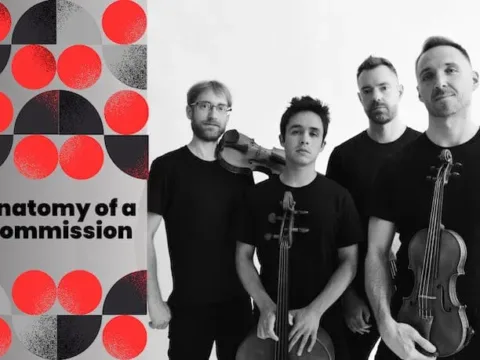Classical music lovers feel a rush of excitement each year when orchestras release their plans for an upcoming season. Marketing brochures feature glossy photos of conductors and soloists, hopefully enticing patrons to swoon over the year’s top-flight catches. But many listeners also take a closer look at the musical programs. And every year, social media platforms explode with disappointment as one orchestra after another tries to sell a season riddled with music by dead white men. In the last month, for example, the Chicago Symphony Orchestra, Rochester Philharmonic, and Philadelphia Orchestra came under intense social media scrutiny for programs seemingly devoid of any music by women, as if none existed:
Dear @chicagosymphony:
You are my home orchestra. I used to ask for tickets every birthday and Christmas growing up. You are a huge part of the reason I went into music. That’s why it breaks my heart to see you do a 100% male season. https://t.co/PijYcVrBBS
— Patricia Wallinga
(@pwallinga) January 30, 2018
Hey @RochesterPhil I counted a single composition by a woman in your philharmonics series for the upcoming season. And zero by a person of color. Tremendously shameful, especially considering the city you claim to represent. Next year, do better. @MTEW_com
— Gabrielle Cornish (@gcornish91) January 31, 2018
Seriously WTF. @philorch you are my hometown orchestra. I fell in love with orchestral music after going to see you on class trips. Dragged my parents and friends to your concerts for years. Dreamed of writing for you. Please join us here in the 21st century, the water’s fine. https://t.co/dAGMleKfWS
— Missy Mazzoli (@missymazzoli) February 2, 2018
The situation may seem especially puzzling, given that classical musicians, even the conductors of these very orchestras, often champion progressive causes. What gives?
Simply put, lack of diversity on concert programs is built into the institutional structure of American classical music organizations, leading to systemic discrimination against women, people of color, and other historically underrepresented musicians.
Systemic discrimination occurs when biases like racism and sexism cut across unique organizations. It’s closely tied to, but distinct from, actions we associate with overt bias—a conductor claiming that men are better on the podium or an orchestra defending its discrimination against women and musicians of Asian heritage. Rather, systemic discrimination relies on the abdication of individual responsibility for its consequences, thus rendering it passive and plausibly deniable.
In the world of orchestral music, “the system” sustains discriminatory practices even when individuals within it claim to be progressive.
How does the system work?
Artistic teams for large orchestras typically plan individual concert seasons in a piecemeal fashion. Soloists and guest conductors must be booked several years in advance, and even the music director may have competing obligations. Without a firm policy commitment to inclusive programming, this planning method allows the team to overlook a lack of diversity during a given season as the delicate balance of scheduling can supersede these concerns.
But the work of artistic planners does not happen in isolation. Music directors of large orchestras are typically in residence for a fraction of the full season and can stretch their core repertoire over five or more years before it becomes stale. It could take at least this long for a director to get through the canonical symphonies of just three composers: Beethoven, Mahler, and Bruckner. As a single season takes shape, guest conductors only need to avoid doubling someone else even if all the conductors share the same core repertoire, which can now be squeezed into one season. Finally, soloists need only avoid conflicts with other soloists on the same instrument.
The combined effect leads to programming stagnation. Each season becomes a game of musical chairs. Who will play what “masterwork” this year?
Why are disruptions of the pattern so rare?

Sociologist Pierre-Antoine Kremp has explained that conductors and soloists earn the greatest financial and cultural rewards for sounding their best—that is, performing at the highest levels of technical and interpretive ability. Historically, they’ve received smaller rewards, if any, for diverse programming, including world premieres. Musicians with impeccable technical and interpretive reputations, Kremp explains, carry enough cultural weight to take credit for “discovering” a supposedly great piece of music when a premiere goes well. But they can publicly deflect the responsibility for failure onto lack of rehearsal time or unclear instructions from the composer.
How these performers achieved these reputations depended, of course, on how well they’ve succeeded as interpreters of the canonical repertoire. African American conductors such as Everett Lee and Dean Dixon were exceptionally cautious about programming music by other African Americans for fear that they would be pigeon-holed as “racial” and therefore second-rate in the eyes of their contemporaries. It’s an extension of a principle taught in basic music theory classes: you must learn the rules before you can break them.
Augmenting this situation, agents and managers have an incentive to encourage their clients not to paint outside the lines: a flop might cause invitations to dry up.
In sum, the systemically circumscribed financial interests of a performer’s career have supported perfecting a stable, limited repertoire with only the most strategic divergences.
The resulting lack of diversity can filter into an orchestra’s marketing strategies. For example, the choice to recycle pieces allows marketers to recycle verbiage without much critical thought. Empty single-word descriptions like “famous” and “great” fill the pages of marketing brochures, while canonic composers are labeled “masters.” But what can be said so easily about a piece or composer no one knows? The Philadelphia Orchestra chose “beautiful” to describe its most adventurous offering of the season: Franz Berwald’s third symphony. Not much of a ringing endorsement, but patrons can be grateful for the assurance.
As I’ve explained in my book Orchestrating the Nation, the underlying premise here is the false belief that greatness is a quality inherent in a piece of music, rather than a culturally conditioned designation given by someone else. This way of thinking ignores the fact that a piece can never be considered great, much less famous, if it is never performed. Recycling pieces and the phrases we use to describe them becomes a tautological exercise.
Audiences themselves are the final piece of the systemic puzzle. Individual listeners develop unique attachments to certain composers, works, or interpreters. Since a patron’s unique favorites may appear only once every few seasons, performances of these standards can become monumental experiences well worth paying for. I would venture to guess, however, that most patrons don’t want to throw out the baby with the bathwater by drastically reducing performances of canonical works altogether. Orchestras can therefore lean heavily on the canon by conceiving of “the audience” as a monolithic unit that will enjoy this Mozart concerto or that Mahler symphony every time it appears, rather than a group of individuals unwilling to sacrifice a piece of the canon for fear of losing it all.
Sadly, the lack of exposure to new pieces, even those written in earlier eras, creates a self-perpetuating cycle of ignorance. How can someone grow to like a piece if it’s never performed in the first place? Or decide if it’s “great,” if we believe in that sort of thing?
This quandary is not necessarily problematic from the orchestra’s perspective, for certain organizations have doubled down on the presumption of audience ignorance. Following the recent announcement of the season in Rochester, a student at the nearby Eastman School of Music asked the orchestra why women were not represented on their programs, to which they responded:
— MTEW.org (@MTEW_com) January 31, 2018
This lazy response only feeds the bogus myth that no women or composers of color were active during “ye olde times,” which I assume means the late eighteenth and nineteenth centuries. And the underlying policy ghettoizes women and people of color who are active composers today. (The Tweet has since been deleted.)
Admittedly, marketing teams must balance the widespread preference for musical familiarity with the fact that promoting diversity can generate brand appeal and goodwill. Astonishingly, the Philadelphia Orchestra described its season this way:
[A] kaleidoscope of matchless breadth, encompassing a world of nationalities and cultures, and musical styles from Romantic to 12-tone, and Baroque to Broadway. In other words: This season has it all.
Except women, evidently.
Perhaps the most dumbfounding aspect of this situation is that we would be hard-pressed to argue that the system is truly dysfunctional or on the brink of collapse. The system is designed to exclude. Financial problems aside, these organizations hum along as each moving part may recognize that lack of diversity is a general problem, but no one person’s problem.
But lack of diversity is everyone’s problem. In 1950, composer William Grant Still forcefully exposed racism in the classical music industry by pointing out that even conservatory-trained African American musicians preferred to work in jazz to avoid the hurdles put in place by orchestras and opera companies. We may think of 1950 as “ye olde times,” but composer Sarah Kirkland Snider has detailed the more casual ways that certain deeply-embedded patterns of behavior still serve to exclude women (and, mutatis mutandis, other underrepresented groups) from pathways to success in the industry. Think of the significant opportunity cost of lost talent and creativity—and the equally significant tolls paid by the victims of discrimination.
What can we do to change?
Since this is a systemic problem, each part of the system must change.
Arts administrators should commit to diversity in ways that allow their patrons and donors to hold them accountable.
Incorporate elements of diversity and inclusion into the organization’s mission, and find board members who can monitor this purpose. Drop the singular focus on phony subjective concepts like “great symphonic music” and “the highest level of artistic excellence,” since these in no way conflict with diversity.
The most prominent conductors and soloists should be leaders.
Commit to expanding your repertoires since you have the least cultural capital to lose by doing so. Otherwise you are hoarding opportunity and betray a lack of creativity.
Marketers should rethink their strategies since audiences themselves are diverse, not only in terms of identity but in their associations with classical music.
Remember that music is the organization’s core product, not the opportunity to see stars or sit in awe of greatness. Strategies that rely on the presumption of ignorance are not acceptable.
Audiences should make their preferences known, both verbally and with their dollars.
If the orchestra you support does not meet your needs, find another. It’s your choice. No orchestra is too big to fail.


